BACKGROUND
The Metropolitan Infectious Diseases Hospital was established on 7th October 1932 by the South Australian Government, to take over from the overcrowded Infectious Diseases Block at the Adelaide Hospital, North Terrace. The new hospital was designed to care for and accommodate patients with infectious diseases such as polio, scarlet fever, measles, and diphtheria.
The new Hospital was an autonomous organisation controlled by its own Board of Management and its finance was maintained solely by the contributions of local councils.
Clarence Charles Cooke, JP, served on the Board of Management at the time the new Infectious Diseases Hospital was established, representing the local Board of Health for the municipality of Henley and Grange, and the districts of Prospect, Woodville and Yatala South.
COOKE, Clarence Charles J.P.

Photo courtesy of Murray Bridge Council
DATE OF BIRTH
Clarence Charles Cooke was born on the 9th April 1896, in Norwood, South Australia.
RESIDENCES
Prior to enlisting in WW1, Clarence Cooke lived with his mother in Ellen Street, Croydon Park, SA. In his later years (during the 1940’s, and until his death in 1955) he lived in Murray Bridge, South Australia.
MARRIAGE DETAILS
Clarence Charles Cooke married Ada Wilson 14th April 1919, in the Parish Church, Christchurch, London, England. He and his wife Ada returned to Australia, leaving England on 21st June 1919, on board the SS Königin Luise, disembarking in Adelaide on 11th August 1919.

The ocean liner Konigin Luise was built for the North German Lloyd (NDL) line, and named after Queen Louise of Prussia. It was launched in 1896 to ply Australian, Far East and North Atlantic routes. At the outbreak of World War I, Konigin Luise was in port in Bremen, where it stayed, largely due to a British blockade of key German ports. She was surrendered on 10 Apr 1919 and allocated to the Orient Steam Navigation Company. She made three journeys to Australia carrying troops returning home, with her return journey carrying British troops home from Burma and India.
Clarence and Ada’s two children were born following their return to Australia:
- Son, Clarence Albert Cooke born on 31st December 1919 in Adelaide, South Australia (died in 1973).
- Son, Colin Ralph Cooke born about 1923 (exact date unknown) in Adelaide, South Australia (died in 2005).
WORK HISTORY & DATES
At the time he enlisted in the AIF (at the age of 18), Clarence Charles Cooke’s occupation was recorded as a printer. When elected to the Infectious Diseases Hospital Board in 1932, his occupation was still recorded as a Master Printer.
Clarence Charles Cooke served as a Councillor for the City of Woodville from 1926-1934, including two years as Chairman of the Council (1930-1932).
After moving to Murray Bridge, he worked as a printer, then Editor, on the local paper – the Murray Valley Standard, including taking on the role of writing a popular column of whimsy called “Mingling with the Multitude” under the Byline “The Stroller”. He resigned from the paper in 1950.
Clarence Charles Cooke served as Mayor of the Murray Bridge Council from 1943–1951. He resigned as Mayor of Murray Bridge in July 1951, to take control over the Sturt Reserve Kiosk, Murray Bridge, South Australia.
WAR RECORDS, AWARDS & MEDALS
Cooke enlisted in the Australian Imperial Force (AIF) on the 19 Feb 1915, when he was 18 years and 10 months old. His Unit embarked from Adelaide, South Australia, on board HMAT A30 Borda on 23 June 1915. His service number in WW1 was 2128.
He joined the 10th Battalion at Gallipoli in August 1915, and in September 1917, he was awarded the Belgian Decoration Militaire (awarded for gallantry, devotion to duty or exceptional service) for conspicuous service at Bullecourt.
He was also awarded the Military Medal – for his service during the ‘Battle of the Menin Road’.
During the operations of the 19th – 22nd September 1917, at Polygon Wood, east of Ypres, Corporal Cooke displayed great resourcefulness and courage when in command of a Lewis Gun Section. His team was sent forward to man an outpost position and when a shell blew out his team, he got his gun in order and manned the post alone until such time as he could get a signal back for reinforcements.
By his dogged determination to hang on, although badly shaken, he set a great example and materially helped in keeping the enemy down and allowing his consolidation to proceed
Commonwealth Gazette’ No. 31 – Date: 7 March 1918

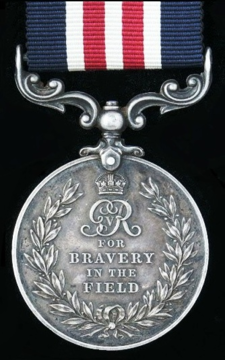
Medals attributed to Clarence Charles Cooke: Military Medal and Bar, the 1914/15 Star, the British War Medal and the Victory Medal.

Cooke again signed up for war service during WWII on 7th April 1942. Due to his age at that time (46 years) he was enlisted into the 8th Battalion Volunteer Defence Corps (VDC). The VDC was an Australian part-time volunteer military force established during World War II, modelled on the British Home Guard.
The 8th Battalion was based in Murray Bridge (where Cooke was living at the time). His service number during WWII was S74250, and after completing officers training in Narellan, NSW, he was appointed to the position of Captain.
LATER LIFE/RETIREMENT
Clarence Charles Cooke was Secretary of the Murray Bridge RSL in 1945 and became President in 1951.
Also in 1945, he served as the State Chairman, and Deputy Australian Chairman, of the Murray Valley Development League (now called the Murray Darling Association). The League was established in 1944 to ‘promote inland development, decentralisation and encouraged communities to be conscious of their common heritage, the Murray River.’
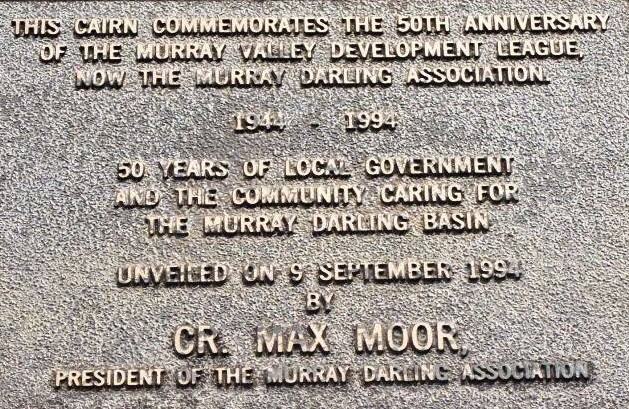
DATE OF DEATH
Clarence Charles Cooke died 17th March 1955, aged 58 years. He is buried in the Murray Bridge cemetery, South Australia.
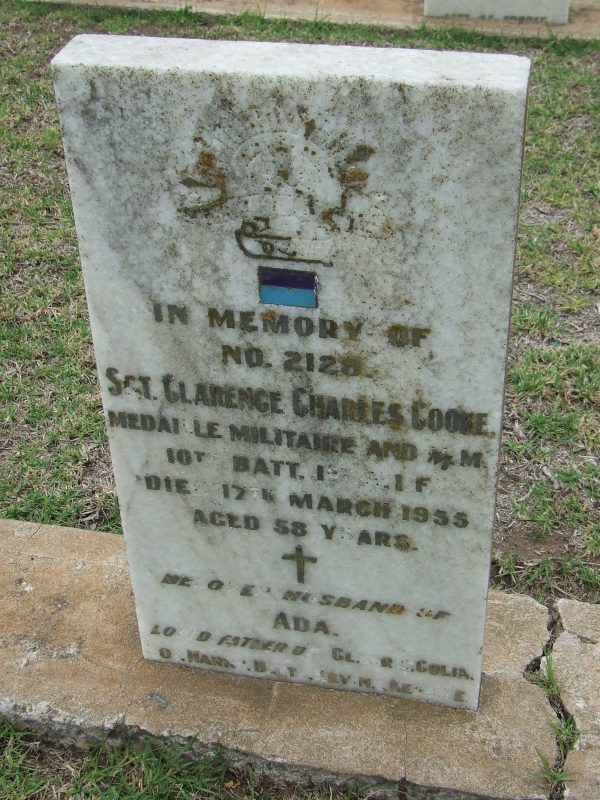
His wife Ada died 12th July 1984 at the age of 86; she was also buried in Murray Bridge, South Australia.
NEWSPAPER ARTICLES
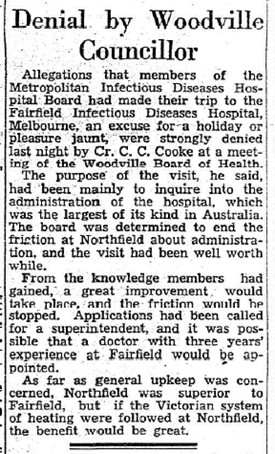
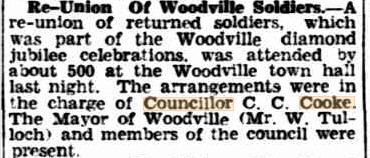


More Information about the Metropolitan Infectious Diseases Hospital can be found here:
Written by Karyn Baker, CALHN Health Museum Volunteer